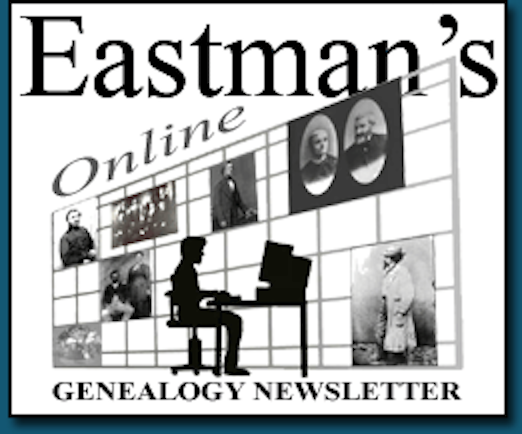The following is a Plus Edition article written by and copyright by Dick Eastman.
WARNING: This article contains personal opinions.
 One thing that constantly puzzles me is why do genealogists keep re-inventing the same wheels? In fact, we have the tools today to reduce this duplication of effort immediately and perhaps to even drive it to zero within a few years. If we do that, the result will be peer-reviewed, high-quality genealogy information available to everyone.
One thing that constantly puzzles me is why do genealogists keep re-inventing the same wheels? In fact, we have the tools today to reduce this duplication of effort immediately and perhaps to even drive it to zero within a few years. If we do that, the result will be peer-reviewed, high-quality genealogy information available to everyone.
For decades, the standard method of genealogy research has been to look at original records as well as compiled genealogies, looking for information about each ancestor, one fact at a time. In modern times, we typically have used IMAGES of the original records published on microfilm and, more recently, images that appear on our computer screens. We then supplement these original records with compiled genealogies from many sources, including printed books, online web sites, and even GEDCOM files online or on CD-ROM disks. Experienced genealogists also understand the importance of VERIFYING each piece of information, regardless of where it was obtained. Yes, even original hand-written records made at the time of an event may contain errors.
Compiling a genealogy typically requires hundreds of hours of work, sometimes thousands of hours, sometimes great expenditures of money, and, when original records have not been easily available locally, we often spend significant amounts of money on travel.
To be kind, I will simply say that the results have been variable. Some skilled and careful researchers have produced accurate and carefully documented genealogies. Other genealogists, typically those with less-than-perfect research skills or motivation, have produced compiled genealogies containing errors. A few have produced genealogies that I can only describe as "fairy tales."
The guidelines that we have all learned for years state that experienced genealogists must educate the newcomers in the proper methods of creating accurate and meaningful genealogies. We must teach every newcomer how to "do it the right way." My opinion is that this hasn't worked very well. I see as many errors being cranked out today as I saw years ago. In fact, due to the efficiencies of computers today, we can crank out more errors in a shorter period of time than ever before. I don't think the percentage of errors has changed much over the years, but the VOLUME of genealogies certainly has increased!
Today, we produce more garbage than ever before. I will suggest our efforts of "educating the masses" in proper research techniques have been a failure. Yet, I believe there is a better way.
The methods of researching haven't changed much over the years. Erroneous information gets published by well-meaning genealogists who try to do "the right thing" but unwittingly publish and perpetuate errors. Finding and correcting those errors is difficult and frequently never happens. Because the erroneous data becomes widely circulated while corrections rarely receive the same distribution, errors are perpetuated forever.
The remainder of this article is reserved for Plus Edition subscribers only. If you have a Plus Edition subscription, you may read the full article at: https://eogn.com/(*)-Plus-Edition-News-Articles/13230890.
If you are not yet a Plus Edition subscriber, you can learn more about such subscriptions and even upgrade to a Plus Edition subscription immediately at https://eogn.com/page-18077.
 Latest News Articles
Latest News Articles Do you have an RSS newsreader? You may prefer to use this newsletter's RSS feed at:
Do you have an RSS newsreader? You may prefer to use this newsletter's RSS feed at: